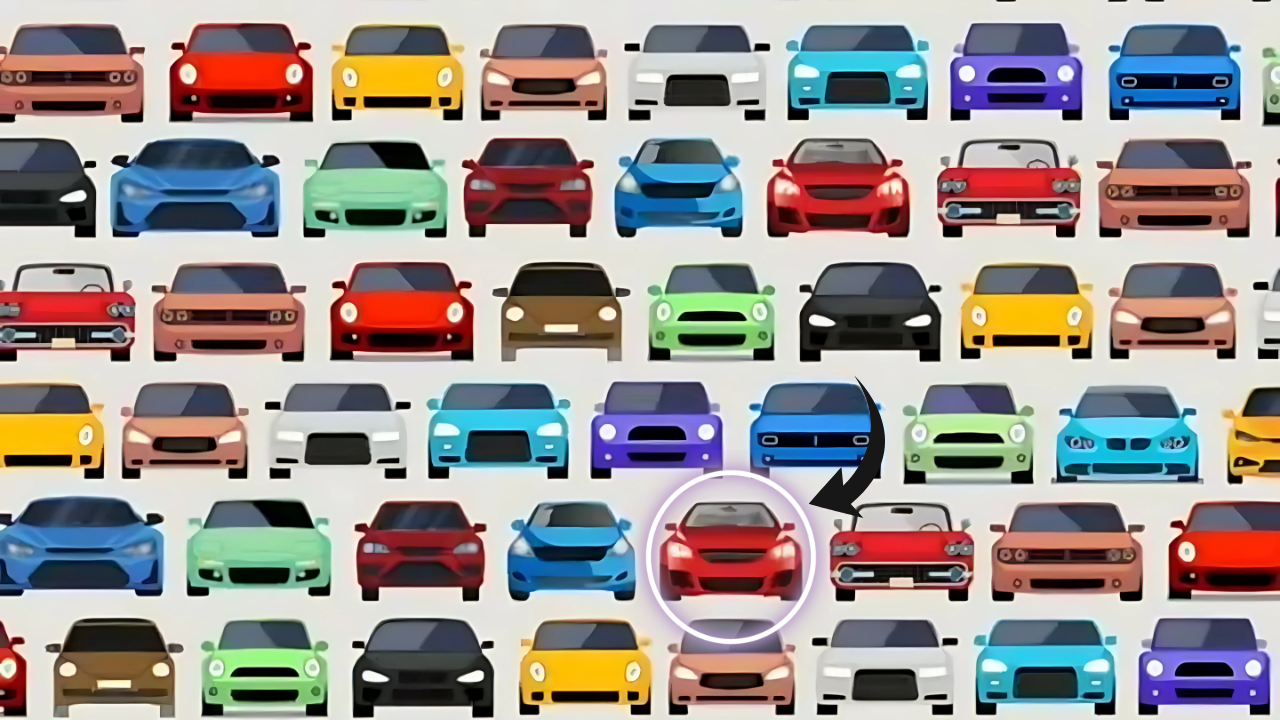Optical illusions are images or patterns that trick the brain into perceiving something different from reality. They exploit the way our visual system processes information, often creating confusion between what we see and what is actually there. These puzzles can involve ambiguous shapes, hidden objects, or subtle differences that challenge our perception. The beauty of optical illusions lies in their ability to engage people of all ages, making them a perfect blend of entertainment and mental exercise.
How the Car Optical Illusion Works
Imagine a grid of colorful cars—perhaps a lineup of sleek sedans, rugged SUVs, or sporty convertibles. At first glance, they all look identical: same shape, same color, same design. But one car stands out with a subtle difference. It could be a missing side mirror, a different wheel design, a slightly altered bumper, or even a unique color shade. Your job is to find that anomaly as quickly as possible. The faster you find it, the sharper your observation skills!

Tips for Solving the Car Puzzle
-
Scan Methodically: Divide the image into sections and compare each part (wheels, windows, etc.).
-
Look for Symmetry Breaks: Differences often disrupt the balance of the image.
-
Focus on Small Details: Pay attention to minor elements like headlights or door handles.
-
Take Your Time: If you’re stuck, relax your eyes and look again.
-
Use Peripheral Vision: Sometimes, the anomaly pops out when you soften your gaze.
Why Optical Illusions Are Good for Your Brain
Spot-the-difference puzzles engage multiple areas of the brain. The visual cortex processes the image, while the prefrontal cortex handles decision-making and problem-solving. Meanwhile, the parietal lobe helps with spatial awareness, allowing you to compare elements across the grid. This mental workout can improve your focus, memory, and attention to detail over time.
Answer

Types of Optical Illusions
| Illusion Type | Description | Real-World Example |
|---|---|---|
| Geometric | Shapes appear distorted or misaligned | Müller-Lyer illusion |
| Ambiguous | Image can be interpreted in multiple ways | Rubin’s vase |
| Paradox | Objects defy logic or physics | Penrose triangle |
| Physiological | Patterns cause afterimages or motion | Hermann grid |
| Real-World | Occur naturally or in daily life | Mirage on a hot road |
How to Make Your Own Car-Themed Illusion
-
Choose a Base Image: Start with a clear car image.
-
Make Copies: Duplicate to create a grid.
-
Add a Subtle Change: Alter one car slightly.
-
Test Your Puzzle: Share with friends and adjust difficulty.
-
Share the Fun: Post online or challenge others!
FAQs
Q1: What makes optical illusions so tricky?
A: They exploit how our brains process visual information, often hiding subtle differences.
Q2: Can solving these puzzles improve my brain health?
A: Yes, they can boost attention, memory, and problem-solving skills.
Q3: Are there government resources on optical illusions?
A: Yes, see the National Eye Institute1 and NINDS3.
